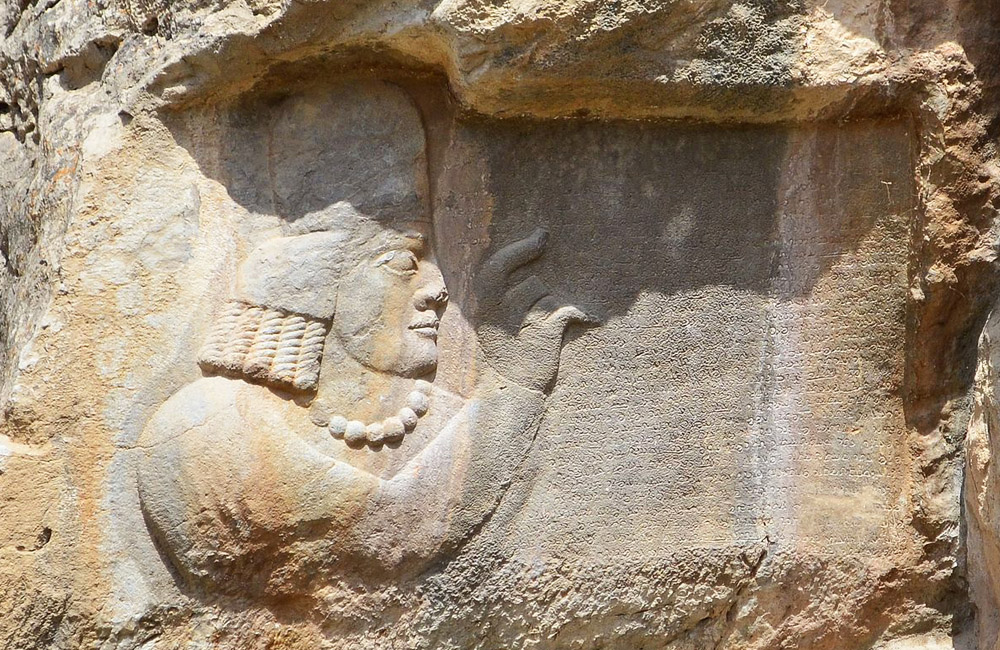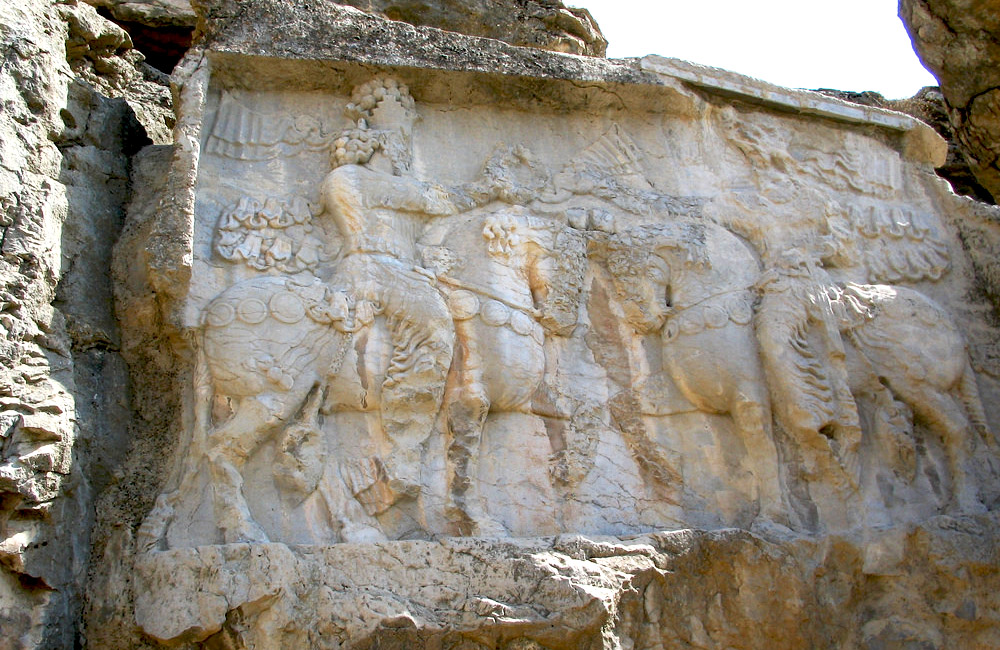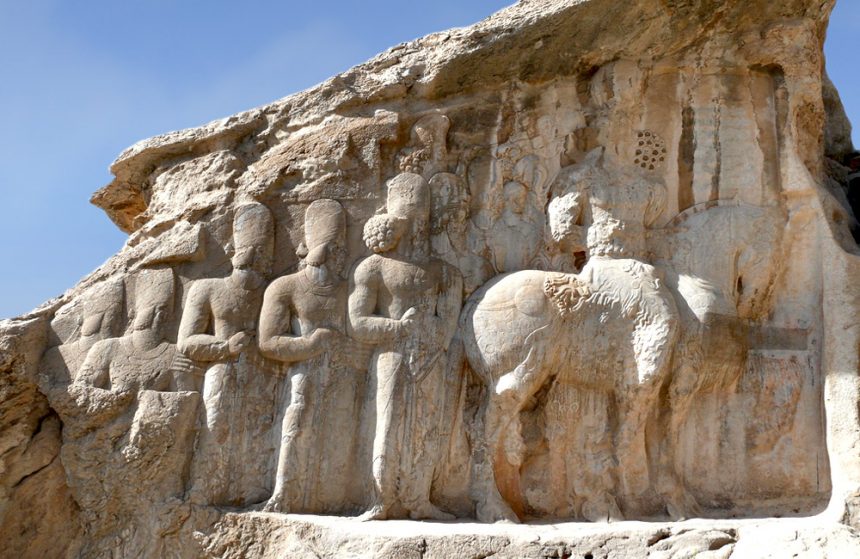A majestic ancient rock relief in Shiraz, Naqsh-e Rajab, is one of the most beautiful places of Iran. If you are here to visit Persepolis and Pasargadae, do not miss this elegant masterpiece of ancient Persia.
Three kilometers north of Persepolis, on the right side of Royal Road, you will find Naqsh-e Rajab. Royal Road was constructed to facilitate the communication between royal Capital of Persia, Susa, to Lydian capital of Sardis, 5th century BCE. Inscriptions of investiture of Ardeshir I, Shapur I also known as “Shapur`s Parade”, and another inscription attributed to Kartir, the Sasanid high priest, are the scenes carved on the northern slope of Rahmat mount.
Sasanid kings left too many rock reliefs, most of them located in Fars province, to display their power and to attribute rituals like conquering their enemies and investitures, commanding to carve the rocks to show off the glory and high condition of Sasanid Empire.
Sasanid kings wanted to be related to Achaemenid Empire, so most of the rock reliefs are seen in Fars Province, not too far from Persepolis.
An Introduction on Naqsh-e Rajab Reliefs
Three inscriptions are seen in Naqsh-e-Rajab, narrating different royal incidents which will be explained below.
Ardeshir I Investiture Inscription (224-239 BC)
Carved on eastern cliff, investiture of Ardeshir I, the founder of Sasanid Empire is considered to be the oldest relief. On a 4 meter width background and 2.5 meter height, an investiture scene of Ardeshir I receiving the wreath of power from Ahuramazda with his right hand, and kept his left forefinger raised as a sign of respect, with an adorned crown on his head is seen.
Ahuramazda, wearing a crenate crown, bushy hair on his shoulder and a simple necklace, stands facing to Ardeshir I and offering him the wreath of power with his right hand. There are two men behind Ardeshir I, two ladies next to Ahuramazda and two small figures between Ardeshir and Ahuramazda, which might be two kids. One of the figures behind Ardeshir I, is a general keeping a fly flap over the king`s head, and the other is Shapur, Ardeshir I`s son and the prince, kept his right hand raised as a sign of respect for Ahuramazda and king, holding his left hand on scabbard, with long hair and a necklace.
Two royal ladies seen next to Ahuramazda are considered to be Ardeshir I`s mother and spouse, according to some scholars.
Under the wreath of power and between Ardeshir I and Ahuramazda, two faded small figures are observed, one of them wearing Sasanid costume, holding his hand raised, and the other one is holding a mace. This part of the carving is severely damaged. Walther Hinz, German scholar of Elimate studies, believes the left figure might be Bahram, son of Shapur I (239-270 BC), and the right figure as Bahram, God of War in ancient Persia.
Kartir`s Inscription
During Bahram II (276-293 BC) reign, a smaller inscription was carved on the western face of the cliffs. Portrait of Kartir, the powerful Sasanid priest during the Shapur I, Bahram I and Bahram II era is etched, holding his right forefinger raised to pay respect and dignity to the royal assembly, indicating to an inscription behind him. This inscription, written in 30 lines in Middle Persian, briefly describes his ascent.

“I have requested Gods, if they already sent me to the living world, then to pass me through the death world, and show me the image of heaven and hell” says a part of the inscription.
Investiture Relief of Shapur I (239-270 BC)
On a frame of 4.5m length and 3m width, Shapur I on horseback is shown in investiture scene.
A carving and sculpturing masterpiece from Sasanid era, this inscription is carved in the most harmonic proportions, showing Shapur I on his horse, receiving the wreath of power from Ahuramazda, with his left hand kept on his sword. King`s face and hand details is faded.

Ahuramazda, wearing a crenate crown over his long and curly hair, and a costume similar to Shapur I, is riding a horse.
Both horses are raised their left hands, although the detail of faces and the bodies is damaged. This relief is carved on the northern wall of Naqsh-e Rajab, two years after investiture, before king`s win the Roman Empire battle.
Recommended Reads | Internet Access in Iran
Recommended Reads | Pasargadae Ancient City
City/Town: Shiraz
Address: Naghsh-e Rajab, Marvdasht-Sarooie Rd.,
Operating Days: Every days
Operating Hours: 8 Am. to 7 Pm.
Neighborhood: Takht-e Rostam – Naghsh-e Rostam – Laneh Tavoos Tourism Restaurant – Estakhr ancient city


